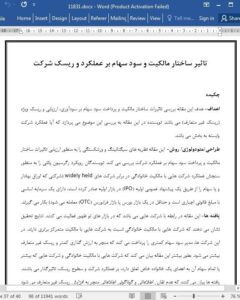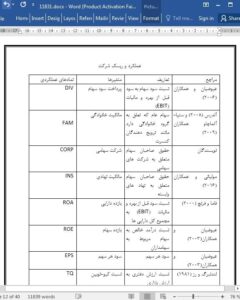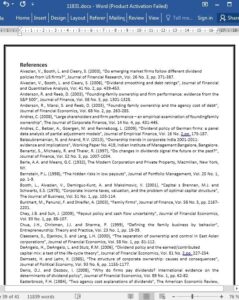Abstract
Purpose – The purpose of this paper is to examine the influence of ownership structure and dividend payouts over firm’s profitability, valuation and idiosyncratic risk. The authors further investigate if corporate performance is sector dependent.
Design/methodology/approach – The study employs signaling and bankruptcy theories to evaluate the influence of ownership structure and dividend payout over a firm’s corporate performance. The authors use a panel regression approach to measure the performance of family owned firms against that of widely held firms.
Findings – The study confines to firms operating out of emerging markets. The results show that family owned firms are dominant with concentrated ownership. The management pays lower dividend leading to lower valuation and higher idiosyncratic risk. The study further illustrates that family ownership concentration and family control both influence firm performance and level of risk. The findings indicate that information asymmetry and under diversification lead to increased idiosyncratic risk, resulting in the erosion of firm’s value. Results also confirm that firms paying regular dividends are less risky and, hence, command a valuation premium.
Originality/value – The evidence supports the proposition that information asymmetry plays a significant role in explaining dividend payouts pattern and related impacts on corporate performance. The originality of the paper lies in factoring idiosyncratic risk while explaining profitability and related valuation among emerging market firms.
1. Introduction
Dividend policy by Miller and Modigliani (1961) is based on the firms’ sources and usage of funds (Residual theory). Firms with higher profits pay higher dividends and firms with higher investments have lower dividend payouts. However, as per signaling theory, investors correlate any change in the firm’s dividend payout pattern with firms’ health and managements’ view on the firm’s future profitability prospects. Dividend payouts influence firms’ profitability and valuation through cash flow and/or risk level. Reduced free-cash limits agency costs ( Jensen, 1986), but it also restricts firms’ investment capabilities.
6. Conclusions
The study employs panel estimation approach to examine the impact of dividend payouts on firm performance in a setting dominated by family controlled firms. The study uses 4,210 firm-years of data between 2007 and 2017. It attempts to explain the impact of ownership structure and dividend payout on corporate performance including profitability, valuation and non-systematic risk with the help of agency, signaling and bankruptcy theories.











